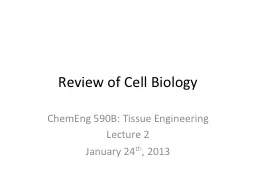PPT-Biology Key Stage 4
Author : rosemary | Published Date : 2023-07-07
Tutorial 24 Enzymes and pH Core Practical In this tutorial we will look at How amylase breaks down starch with reference to the lock and key model The aims and
Presentation Embed Code
Download Presentation
Download Presentation The PPT/PDF document "Biology Key Stage 4 " is the property of its rightful owner. Permission is granted to download and print the materials on this website for personal, non-commercial use only, and to display it on your personal computer provided you do not modify the materials and that you retain all copyright notices contained in the materials. By downloading content from our website, you accept the terms of this agreement.
Biology Key Stage 4 : Transcript
Download Rules Of Document
"Biology Key Stage 4 "The content belongs to its owner. You may download and print it for personal use, without modification, and keep all copyright notices. By downloading, you agree to these terms.
Related Documents










![[Project Short Name] Stage Gate Approval Summary](https://thumbs.docslides.com/740415/project-short-name-stage-gate-approval-summary.jpg)



